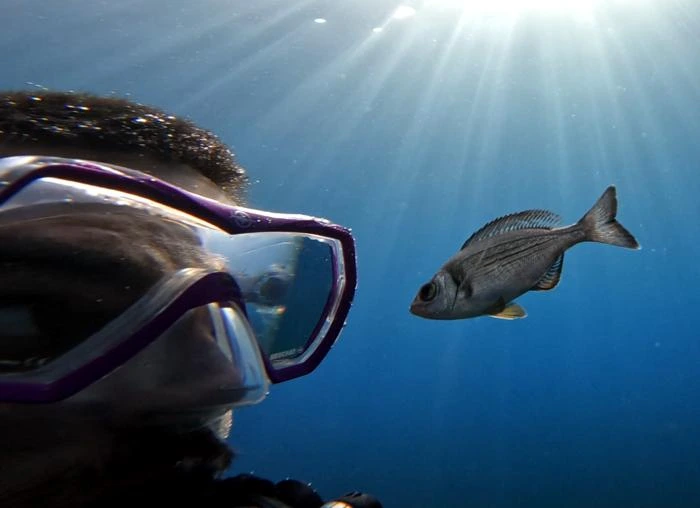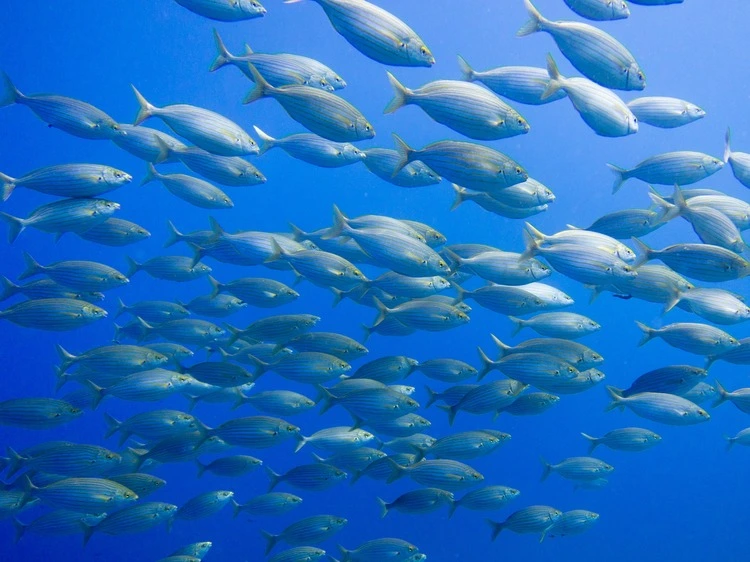
Wild fish can use visual differences between humans to recognise individuals who have previously rewarded them, new research shows
By
Are fish capable of telling people apart? The answer, according to a new study published in Biology Letters, is yes. A team from the Max Planck Institute of Animal Behavior (MPI-AB) in Germany recently conducted a series of experiments wearing different diving gear, concluding fish in the wild are able to discriminate between humans based on visual cues.
Scientific evidence proving fish can recognise humans is limited, particularly those in the wild. Previously, one experiment ran on a captive-bred species, archerfish, found that aquatic animals were able to recognise computer-generated images of human faces in laboratory experiments.
Enjoying this article? Check out our related reads:
‘But nobody has ever asked whether wild fish have the capacity, or indeed motivation, to recognise us when we enter their underwater world,’ says doctoral student at MPI-AB and the University of Clermont Auvergne, Maëlan Tomasek.
How did the study work?
For the latest study, the research team focused their efforts in eight-metre-deep waters within a research site in the Mediterranean Sea. Here, populations of wild fish were already habituated to the presence of scientists, and the experiments took place on fish which came and went as they pleased, according to co-first author of the study, bachelor student Katinka Soller.
For the first phase, Soller tried to attract the attention of local fish by wearing a bright red vest, feeding fish while swimming a length of 50 metres. In particular, two species of sea bream were particularly interested in these training sessions. Eventually, Soller switched out the colourful gear for plain dive clothing, kept the food hidden and only fed fish if they followed her the full 50 metres.
After 12 days of training, around 20 fish were following Soller on these training swims, and due to distinct physical traits – such as differences in scale colours, or injuries to tail fins – she was able to recognise several of them.
The next stage of the study sought to test if these fish could distinguish Soller from another diver, Tomasek, who wore a slightly different coloured wetsuit and fins. On the first day, fish followed both divers equally – but as Tomasek never fed the fish, they quickly changed their minds and began to follow Soller in increasing numbers.
‘This is a cool result because it shows that fish were not simply following Katinka out of habit or because other fish were there,’ said Tomasek. ‘They were conscious of both divers, testing each one and learning that Katinka produced the reward at the end of the swim.’

In the study’s final stage – when Soller and Tomasek both wore the same diving gear – fish were unable to tell the pair apart. For scientists, this was strong evidence that fish had associated visual differences – the colour in dive gear – between each diver.
‘It doesn’t come a shock to me that these animals, which navigate a complex world and interact with myriad different species every minute, can recognize humans based on visual cues,’ said senior author Alex Jordan. ‘I suppose the most surprising thing is that we would be surprised they can. It suggests we might underestimate the capacities of our underwater cousins.’




